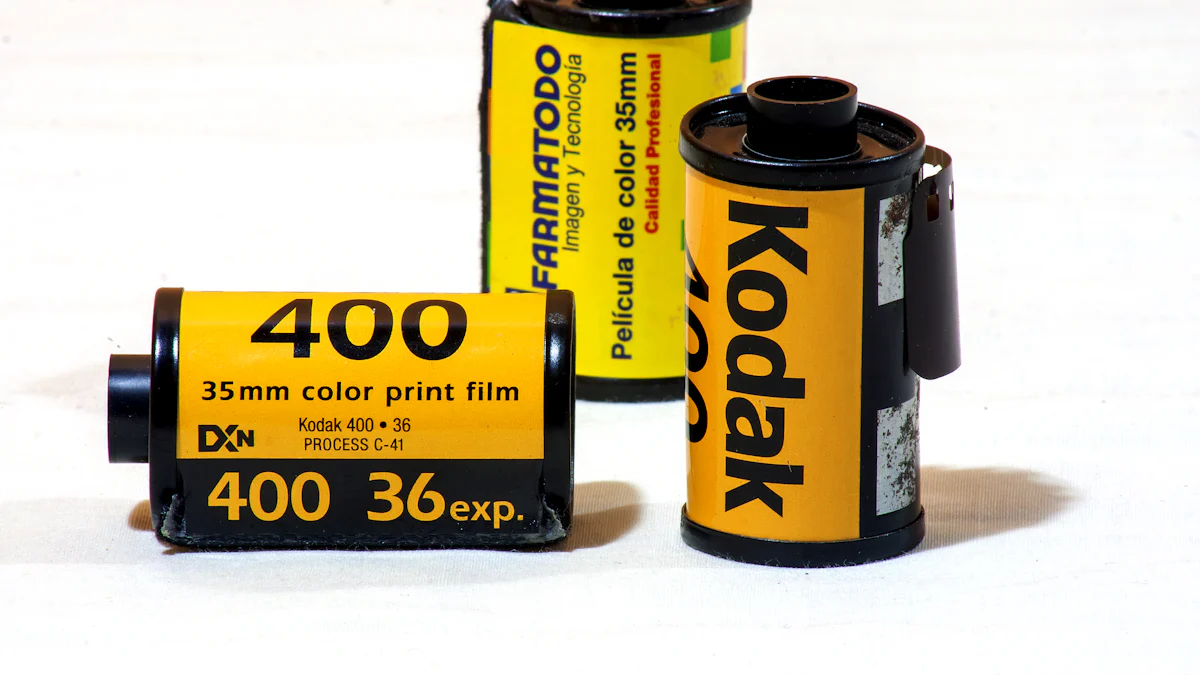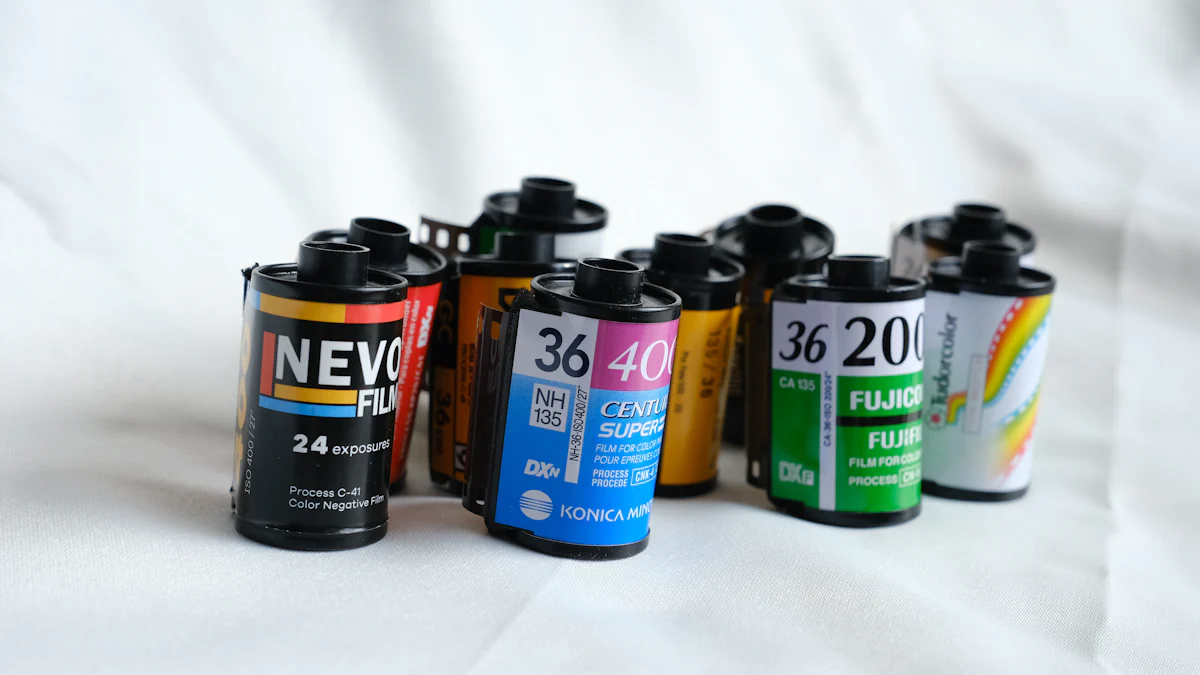Comprehensive Comparison of Carbon Zinc VS Alkaline Batteries

When choosing between carbon zinc vs alkaline batteries, the better option depends on your specific needs. Each type offers unique advantages based on performance, lifespan, and application. For instance, alkaline batteries deliver higher energy density and last up to 8 years, making them ideal for high-drain devices. In contrast, carbon zinc batteries suit low-drain devices due to their affordability and simpler composition.
The global battery market reflects this distinction. Alkaline batteries hold a 15% share, while carbon zinc batteries account for 6%. This difference highlights the broader suitability of alkaline batteries for modern applications. However, cost-effectiveness and environmental considerations also play a role in determining the right choice for you.
Key Takeaways
- Carbon zinc batteries are cheap and work well for low-power items like remotes and clocks.
- Alkaline batteries last longer and give more energy, so they are better for high-power items like cameras and game controllers.
- Use alkaline batteries for things needing steady power. They can last up to 8 years unused.
- Carbon zinc batteries are good for short use but only last 1 to 2 years.
- Always pick the right battery for your device to save money and get the best performance.
Overview of Carbon Zinc vs Alkaline Batteries
What Are Carbon Zinc Batteries
I often find carbon zinc batteries to be a cost-effective solution for low-drain devices. These batteries rely on a simple chemical composition that has been around for decades. The primary components include a zinc anode, a manganese dioxide cathode, and an electrolyte paste. This paste typically contains ammonium chloride or zinc chloride, which facilitates the chemical reaction.
The overall reaction in a zinc–carbon cell can be represented as:
Zn + 2 MnO2 + 2 NH4Cl + H2O → ZnCl2 + Mn2O3 + 2 NH4OH
The zinc casing doubles as the anode, which helps reduce production costs. The manganese dioxide cathode works alongside a carbon rod to enable electron flow. This design makes carbon zinc batteries affordable and widely available.
Some common applications include:
- Remote controls for televisions and air conditioners
- Wall clocks and alarm clocks
- Battery-operated toys like toy cars and dolls
- Compact flashlights
- Smoke detectors
These batteries perform best in devices with low energy demands. Their affordability makes them a practical choice for everyday use, especially when high performance isn’t a priority.
What Are Alkaline Batteries
Alkaline batteries, on the other hand, offer superior energy density and longevity. I often recommend them for high-drain devices due to their advanced chemical composition. These batteries use zinc as the anode and manganese dioxide as the cathode. Potassium hydroxide serves as the electrolyte, enhancing ion flow and overall efficiency.
The chemical reactions in alkaline batteries are as follows:
- Anode (oxidation): Zn(s) + 2OH−(aq) → ZnO(s) + H2O(l) + 2e−
- Cathode (reduction): 2MnO2(s) + 2H2O(l) + 2e− → 2MnO(OH)(s) + 2OH−(aq)
- Overall reaction: Zn(s) + 2MnO2(s) ↔ ZnO(s) + Mn2O3(s)
These batteries excel in a variety of applications, including:
| Sector | Typical Applications |
|---|---|
| Manufacturing | Handheld devices like barcode scanners, digital calipers, and safety equipment. |
| Healthcare | Medical devices such as glucometers, blood pressure monitors, and flashlights. |
| Education | Teaching aids, laboratory equipment, educational toys, and emergency devices. |
| Building Services | Smoke detectors, security cameras, and door locks essential for safety and operations. |
Alkaline batteries are versatile and reliable, making them a go-to choice for both personal and professional use. Their ability to handle high-drain devices sets them apart in the carbon zinc vs alkaline debate.
Key Differences in Carbon Zinc vs Alkaline Batteries

Electrolyte Composition
The electrolyte composition significantly impacts the performance and characteristics of batteries. I’ve observed that carbon zinc batteries use ammonium chloride as their electrolyte, which is acidic in nature. On the other hand, alkaline batteries rely on potassium hydroxide, an alkaline substance. This fundamental difference in composition leads to variations in energy density, lifespan, and discharge rates.
- Carbon zinc batteries: Use acidic ammonium chloride as the electrolyte.
- Alkaline batteries: Use alkaline potassium hydroxide as the electrolyte.
The electrolyte plays a crucial role in determining ionic mobility and charge carrier concentration. Potassium hydroxide in alkaline batteries enhances conductivity, making them more efficient for high-drain applications. In contrast, the ammonium chloride in carbon zinc batteries limits their performance to low-drain devices. This distinction is a key factor when comparing carbon zinc vs alkaline batteries.
Energy Density and Performance
Energy density directly affects how long a battery can power a device. Alkaline batteries have a higher energy density compared to carbon zinc batteries. This makes them ideal for high-drain devices like digital cameras or gaming consoles. Higher energy density also allows for lighter and more compact batteries, which is essential for portable electronics.
In my experience, carbon zinc batteries are better suited for low-drain devices due to their lower energy density. They work well in applications like wall clocks or remote controls, where energy demands are minimal. However, for devices requiring consistent and prolonged power, alkaline batteries outperform their counterparts.
Discharge Characteristics
Discharge characteristics reveal how a battery performs under continuous use. Carbon zinc batteries typically deliver a voltage of 1.4 to 1.7 V during normal operation. As they discharge, this voltage drops to around 0.9 V, which limits their effectiveness in high-drain scenarios. These batteries are best for low-drain devices that do not require frequent power.
Alkaline batteries, in contrast, excel in high-drain applications. They deliver consistent power over time, making them reliable for devices like medical equipment or gaming controllers. Their higher energy density and stable discharge rates ensure longer-lasting performance compared to carbon zinc batteries.
Tip: For high-drain devices, always opt for alkaline batteries to ensure optimal performance and longevity.
Shelf Life and Storage
Shelf life plays a critical role in determining the practicality of batteries, especially for long-term storage. I’ve noticed that alkaline batteries significantly outperform carbon zinc batteries in this regard. Their advanced chemical composition allows them to retain power for up to 8 years under proper storage conditions. In contrast, carbon zinc batteries typically last only 1 to 2 years before losing effectiveness.
Here’s a quick comparison:
| Battery Type | Average Shelf Life |
|---|---|
| Alkaline | Up to 8 years |
| Carbon Zinc | 1-2 years |
Alkaline batteries also maintain their charge better in varying temperatures. I recommend storing them in a cool, dry place to maximize their lifespan. Carbon zinc batteries, on the other hand, are more sensitive to environmental factors. They degrade faster when exposed to heat or humidity, making them less reliable for long-term storage.
For devices that sit idle for extended periods, such as emergency flashlights or smoke detectors, alkaline batteries are the superior choice. Their longer shelf life ensures they remain ready for use when needed. Carbon zinc batteries, while cost-effective, are better suited for immediate or short-term applications.
Tip: Always check the expiration date on battery packaging to ensure optimal performance, especially when purchasing in bulk.
Environmental Impact
The environmental impact of batteries depends on their composition and disposal practices. Carbon zinc batteries are relatively eco-friendly when disposed of responsibly. They contain fewer toxic heavy metals compared to other battery types, which simplifies recycling and reduces environmental harm. However, their disposable nature contributes to waste generation. This highlights the importance of advancements in battery technology and proper disposal methods.
In regions like California, all batteries are classified as hazardous waste and cannot be discarded with household trash. Europe enforces strict recycling regulations under the WEEE and Battery Directives, requiring stores to accept old batteries for proper disposal. These measures aim to minimize environmental damage.
| Region | Disposal Regulation |
|---|---|
| California | Considers all batteries as hazardous waste; banned disposal with domestic waste. |
| Europe | Controlled by WEEE Directive and Battery Directive; stores must accept old batteries for recycling. |
Alkaline batteries, in comparison, are considered more sustainable. They do not contain harmful heavy metals like mercury or cadmium, which can sometimes be present in carbon zinc batteries. This makes alkaline batteries a better option for environmentally conscious consumers.
Note: Regardless of the battery type, always recycle used batteries at designated collection points to reduce environmental impact.
Applications and Suitability

Best Uses for Carbon Zinc Batteries
Carbon zinc batteries work best in low-drain devices where energy demands remain minimal. Their affordability and simple design make them a practical choice for everyday applications. I often recommend these batteries for devices that do not require prolonged or high-power output. Common examples include:
- Remote controls for televisions and air conditioners
- Wall clocks, alarm clocks, and wristwatches
- Battery-operated toys like toy cars and dolls with sound effects
- Small flashlights, such as emergency or pocket-sized LED lights
- Smoke detectors and carbon monoxide alarms
These batteries provide a cost-effective solution for powering devices used intermittently or for short durations. However, their maximum voltage of 1.5 V limits their suitability for high-performance applications. The quality of materials used in their construction also impacts their reliability. For low-drain devices, though, carbon zinc batteries remain a dependable option.
Best Uses for Alkaline Batteries
Alkaline batteries excel in both low-drain and high-drain devices due to their superior energy density and stable voltage. I find them particularly effective in applications requiring consistent power over time. Here are some ideal uses:
- Remote controls and clocks benefit from their higher discharge capacity.
- Backup batteries for emergency devices take advantage of their long shelf life.
- High-current devices like cameras and electronic toys rely on their energy density.
- Specialized applications, such as outdoor equipment, perform better with alkaline batteries due to their ability to function in lower temperatures.
- Environmentally conscious users prefer them for their mercury-free composition and safe disposal.
Their versatility and reliability make alkaline batteries a preferred choice for both personal and professional use.
High-Drain vs Low-Drain Devices
The choice between carbon zinc and alkaline batteries often depends on the device’s energy requirements. For high-drain devices like cameras, gaming controllers, or power tools, I always recommend alkaline batteries. Their higher energy density and stable discharge rates ensure longer-lasting performance. In contrast, carbon zinc batteries are better suited for low-drain devices such as remote controls, wall clocks, or small flashlights.
Alkaline batteries significantly outlast carbon zinc batteries in high-drain applications. For example, digital cameras and game controllers demand consistent power, which alkaline batteries deliver effectively. On the other hand, carbon zinc batteries provide an economical solution for devices with minimal energy needs. Understanding the energy demands of your device is crucial when deciding between these two battery types.
Tip: Always match the battery type to the device’s energy requirements to maximize performance and cost-efficiency.
Cost Considerations
Price Comparison
When comparing the cost of carbon zinc and alkaline batteries, I find that carbon zinc batteries are generally more affordable. Their simpler composition and lower production costs make them an economical choice for budget-conscious consumers. These batteries are ideal for powering low-drain devices, where high performance is not a priority. For example, a pack of carbon zinc batteries often costs significantly less than a comparable pack of alkaline batteries.
Alkaline batteries, while more expensive upfront, offer better value for high-drain devices. Their advanced chemical composition and higher energy density justify the higher price. In my experience, the additional cost of alkaline batteries pays off in applications requiring consistent and prolonged power. For instance, devices like digital cameras or gaming controllers benefit from the superior performance of alkaline batteries, making them worth the investment.
Long-Term Value
The long-term value of a battery depends on its lifespan, performance, and suitability for specific applications. Alkaline batteries excel in this regard. They last up to three years, making them a reliable choice for devices that require long-term power. Their ability to retain charge over extended periods also reduces the need for frequent replacements, saving both time and money.
Carbon zinc batteries, on the other hand, have a shorter lifespan of up to 18 months. They are best suited for low-drain devices that do not require frequent power usage. Despite their lower energy density, these batteries remain a cost-effective option for disposable or short-term applications. Here’s a quick comparison of their characteristics:
| Characteristic | Description |
|---|---|
| Economical | Lower production costs make them suitable for disposable devices. |
| Good for Low-Drain Devices | Ideal for devices that do not require frequent power usage. |
| Greener | Contains fewer toxic chemicals compared to other battery types. |
| Lower Energy Density | While functional, they lack the energy density for high-drain applications. |
Alkaline batteries provide better long-term value for high-drain devices. They are suitable for applications requiring consistent power, such as medical equipment or outdoor tools. Carbon zinc batteries, however, remain a practical choice for low-power devices like remote controls or wall clocks. Understanding the energy demands of your device helps determine which battery type offers the best value.
Tip: For devices used frequently or requiring high power, choose alkaline batteries. For occasional use or low-drain devices, carbon zinc batteries are a more economical option.
Pros and Cons of Carbon Zinc vs Alkaline Batteries
Advantages and Disadvantages of Carbon Zinc Batteries
Carbon zinc batteries offer several advantages that make them appealing for specific applications. I often recommend these batteries for low-drain devices due to their cost-effectiveness. They are generally cheaper than alkaline batteries, which makes them a budget-friendly option for consumers. Their lightweight design also makes them easy to handle and transport, especially for portable devices. These batteries perform well in low-drain applications like clocks, remote controls, and small flashlights, where high power is unnecessary.
However, carbon zinc batteries have limitations. Their lower energy density means they cannot sustain high-drain devices for long periods. I’ve noticed that their shorter shelf life, typically around 1-2 years, makes them less suitable for long-term storage. Additionally, they are more sensitive to environmental factors like heat and humidity, which can reduce their performance over time. Despite these drawbacks, their affordability and practicality for low-power devices make them a reliable choice for many users.
Advantages and Disadvantages of Alkaline Batteries
Alkaline batteries excel in performance and versatility. I often recommend them for both low-drain and high-drain devices due to their superior energy density. These batteries provide consistent power, making them ideal for applications like digital cameras, gaming controllers, and medical equipment. Their longer shelf life, which can extend up to 8 years, ensures they remain ready for use even after prolonged storage. Alkaline batteries also perform well in varying temperatures, adding to their reliability in outdoor or emergency situations.
Despite their advantages, alkaline batteries come with a higher upfront cost compared to carbon zinc batteries. This can be a consideration for budget-conscious consumers. However, their longer lifespan and ability to handle high-drain devices often justify the additional expense. I find that their mercury-free composition also makes them a more environmentally friendly option, which is an important factor for many users.
When comparing carbon zinc vs alkaline batteries, the choice ultimately depends on the specific needs of the device and the user. Each type has its strengths and weaknesses, making them suitable for different applications.
When comparing carbon zinc vs alkaline batteries, I see clear distinctions in their performance, lifespan, and applications. Carbon zinc batteries excel in affordability and suit low-drain devices like remote controls and clocks. Alkaline batteries, with their superior energy density and longer shelf life, perform best in high-drain devices such as cameras or medical equipment.
I recommend choosing carbon zinc batteries for cost-effective, short-term use in low-power devices. For high-drain or long-term applications, alkaline batteries provide better value and reliability. Selecting the right battery ensures optimal performance and cost-efficiency for your specific needs.
FAQ
What is the main difference between carbon zinc and alkaline batteries?
The primary difference lies in their chemical composition and performance. Carbon zinc batteries use ammonium chloride as the electrolyte, making them suitable for low-drain devices. Alkaline batteries, with potassium hydroxide as the electrolyte, deliver higher energy density and longer lifespan, ideal for high-drain applications.
Can I use carbon zinc batteries in high-drain devices?
I don’t recommend using carbon zinc batteries in high-drain devices. Their lower energy density and shorter lifespan make them unsuitable for devices requiring consistent power, such as cameras or gaming controllers. Alkaline batteries perform better in these scenarios due to their stable discharge rates.
Are alkaline batteries more environmentally friendly than carbon zinc batteries?
Yes, alkaline batteries are generally more eco-friendly. They are mercury-free and contain fewer harmful chemicals. Proper recycling further reduces their environmental impact. Carbon zinc batteries, while less toxic, still contribute to waste due to their shorter lifespan and disposable nature.
How can I extend the shelf life of my batteries?
Store batteries in a cool, dry place away from direct sunlight and heat. I recommend keeping them in their original packaging until use. Avoid mixing old and new batteries in a device, as this can reduce performance and lifespan.
Which battery type is more cost-effective in the long run?
Alkaline batteries offer better long-term value for high-drain devices due to their longer lifespan and consistent performance. Carbon zinc batteries, while cheaper upfront, are more cost-effective for low-drain devices used intermittently, such as clocks or remote controls.
Post time: Jan-13-2025




